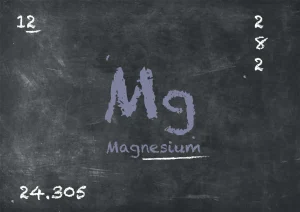
trees now planted
MAGNESIUM
 Magnesium is a chemical element with the atomic number 12 and the symbol Mg. It is a silvery-white metal that is relatively abundant in the Earth’s crust.
Magnesium is a chemical element with the atomic number 12 and the symbol Mg. It is a silvery-white metal that is relatively abundant in the Earth’s crust.
Magnesium is an essential mineral for the human body and is involved in a wide range of biological functions. It plays a crucial role in maintaining normal muscle and nerve function, supporting a healthy immune system, regulating blood pressure, and promoting strong bones.
Magnesium is also involved in energy production, protein synthesis, and DNA synthesis.
A 2008 investigation conducted in Greece examined the impact of magnesium carbonate, also known as magnesite, on controlling phosphate levels in individuals undergoing haemodialysis.
The study found that administering magnesium carbonate for a period of 6 months proved to be a cost-effective and efficient approach for managing blood phosphate levels in hemodialysis patients. This research highlights the potential therapeutic benefits of magnesium carbonate in this specific medical context.
Magnesium (Mg) is an element that naturally occurs in the Earth's crust and is one of the most abundant elements in the Earth's lithosphere. It is primarily found in the Earth's crust as compounds and minerals, rather than in its pure elemental form. Some of the common minerals and compounds in which magnesium naturally occurs include:
- Magnesite (MgCO3): Magnesite is a carbonate mineral that consists mainly of magnesium carbonate. It is one of the primary sources of magnesium and is typically found in sedimentary rocks.
- Dolomite (CaMg(CO3)2): Dolomite is a calcium and magnesium carbonate mineral that often occurs in sedimentary rocks. It contains varying amounts of magnesium and calcium carbonate.
- Brucite (Mg(OH)2): Brucite is a mineral consisting of magnesium hydroxide and is sometimes found in association with other minerals, particularly in hydrothermal and metamorphic settings.
- Serpentine Minerals: Some serpentinite rocks contain minerals rich in magnesium, such as antigorite, chrysotile, and lizardite. These minerals are hydrous magnesium silicates.
- Epsomite (MgSO4·7H2O): Epsomite, also known as magnesium sulfate heptahydrate, is a hydrated magnesium sulfate mineral that forms in arid and saline environments.
- Carnallite (KMgCl3·6H2O): Carnallite is a potassium magnesium chloride mineral that is sometimes found in evaporite deposits, particularly in salt flats and salt beds.
- Other Silicate Minerals: Magnesium is a common component of various silicate minerals, such as olivine, pyroxenes, amphiboles, and biotite, where it is an essential part of their chemical composition.
- Sea Water: Magnesium is naturally present in seawater, where it is dissolved as magnesium ions (Mg2+). Seawater is a significant reservoir of magnesium, and it is extracted as magnesium chloride for various industrial applications.
- Soils and Sediments: Magnesium is an essential element in soils and is a component of various minerals in sedimentary rocks and soils.
While magnesium is abundant in the Earth's crust, it is typically not found in its pure metallic form in nature. Instead, it is found within the structure of various minerals and compounds, making it accessible for extraction and use in various industrial, agricultural, and medical applications.
Magnesium is an essential mineral for the human body, and it is commonly used in medicine and dietary supplements for various purposes. Some medicines and supplements that contain magnesium or use magnesium compounds include:
- Magnesium Supplements: Magnesium supplements are widely available in various forms, such as magnesium citrate, magnesium oxide, magnesium chloride, and magnesium glycinate. These supplements are used to address magnesium deficiencies, promote muscle and nerve function, and support overall health.
- Antacids: Some antacid medications contain magnesium compounds like magnesium hydroxide or magnesium carbonate. These antacids help neutralize stomach acid and relieve heartburn, indigestion, and acid reflux.
- Laxatives: Magnesium-based laxatives, such as magnesium citrate or magnesium hydroxide, are used to relieve constipation by promoting bowel movements. They work by drawing water into the intestines, softening stool, and stimulating bowel contractions.
- Intravenous (IV) Magnesium: In certain medical situations, healthcare providers may administer magnesium intravenously to treat conditions like severe hypomagnesemia (low blood magnesium levels), arrhythmias, preeclampsia during pregnancy, and acute asthma attacks.
- Topical Magnesium: Magnesium oil and magnesium creams or lotions can be applied topically to the skin. Some people use these products to potentially alleviate muscle cramps, soreness, and to increase magnesium levels.
- Magnesium-Based Medications: Magnesium sulfate, also known as Epsom salt, is used intravenously for specific medical conditions, such as to prevent and manage seizures in patients with preeclampsia and eclampsia during pregnancy.
- Dietary Supplements: Magnesium is a common ingredient in multivitamin and mineral supplements, often included for its role in various bodily functions, including muscle and nerve function, bone health, and energy metabolism.
- Cardiovascular Medications: Magnesium supplements or intravenous magnesium may be administered to manage certain cardiovascular conditions, such as arrhythmias (irregular heartbeats) and to prevent hypomagnesemia.
- Migraine Prevention: Some individuals use magnesium supplements as part of their migraine prevention strategies, as magnesium may help reduce the frequency and severity of migraines in some cases.
Here are some specific medical products and medications that contain magnesium that are prescribed for conditions, nutritional support, or intravenous therapies.
- Accusol 35: Accusol 35 is a type of peritoneal dialysis solution used in continuous ambulatory peritoneal dialysis (CAPD) or automated peritoneal dialysis (APD) for patients with kidney failure.
- Balance 1.5% Glucose, 1.25 mmol/L Calcium 1.25 mmol/L: This solution is used in peritoneal dialysis (CAPD/DPCA) to help remove waste and excess fluids from the body.
- Capd / Dpca 17 Stay Safe: A peritoneal dialysis solution similar to Accusol 35, designed for CAPD/DPCA treatments.
- Dianeal PD4 Glucose 1.36%: Dianeal is another type of peritoneal dialysis solution used to treat kidney failure through peritoneal dialysis.
- Elevit: Elevit is a multivitamin and mineral supplement designed for pregnant and breastfeeding women to provide essential nutrients during pregnancy.
- FeedPku Plus: FeedPku Plus is a specialised dietary product used in the management of phenylketonuria (PKU), a genetic disorder that affects the metabolism of the amino acid phenylalanine.
- Gelaspan 40 mg/mL Solution: Gelaspan is a solution used for intravenous infusion and may be used for fluid and electrolyte replacement therapy.
- Hemosol Inj. Impact: Hemosol is an intravenous solution used in medical procedures that may require blood replacement or supplementation.
- Kabiven Emulsion: Kabiven is an intravenous nutritional emulsion used for parenteral nutrition in patients who cannot obtain adequate nutrients from oral or enteral (tube feeding) sources.
- Lebersal Granulated Effervescent: Lebersal may be a dietary supplement or effervescent product, but specific details are needed for a more accurate description.
- Magnesia Cinfa 200 mg/mL: Magnesia Cinfa is likely a magnesium-containing medication used for various purposes, including magnesium supplementation.
- Novasource Diabetes: Novasource is a nutritional supplement designed for individuals with diabetes to support their dietary needs.
- Olimel N12E Emulsion: Olimel is another intravenous nutritional emulsion used for parenteral nutrition in patients who cannot consume nutrients orally.
- Pediaven G15: Pediaven is likely a pediatric nutritional product used in infants and children for nutritional support.
- Rennie Chewable Tablets With Saccharin 680/80 mg: Rennie is an antacid medication used to relieve symptoms of heartburn and indigestion.
- Resource Protein Fibre Taste Vanilla: Resource is a nutritional supplement that may be used for individuals who require additional protein and dietary fibre in their diet.
- Resource Support Instant Flavour Neutral: Resource Support is a nutritional supplement designed to provide additional calories and nutrients to individuals with increased nutritional needs.
- Viaflo Plasmalyte 148: Viaflo Plasmalyte 148 is an intravenous solution used for fluid and electrolyte replacement.
Recommended Products
DIVE DEEPER
How much does the body need per day?
Age |
Male |
Female |
|---|---|---|
|
1 to 3 years: |
80 mg |
80 mg |
|
4 to 8 years: |
130 mg |
130 mg |
|
9 to 13 years: |
240 mg |
240 mg |
|
14 to 18 years old: |
410 mg |
360 mg |
|
19 to 50 years: |
400 mg |
310 mg |
|
51 years and over: |
420 mg |
320 mg |
|
During pregnancy: |
|
350-360 mg |
|
Lactation |
|
310-320 mg |













